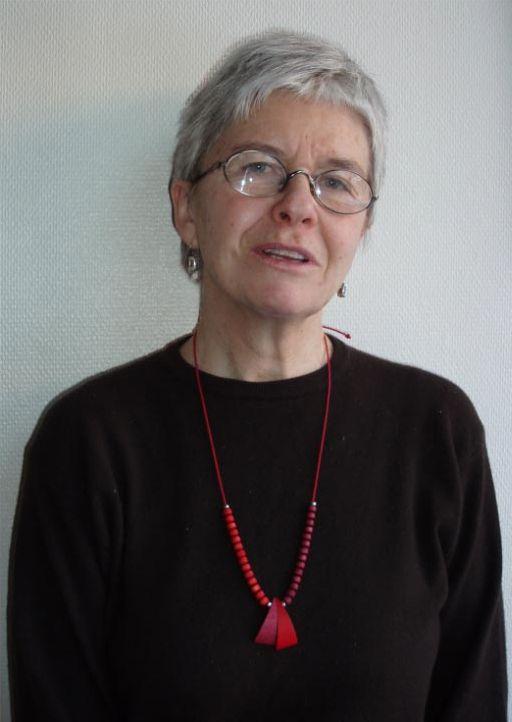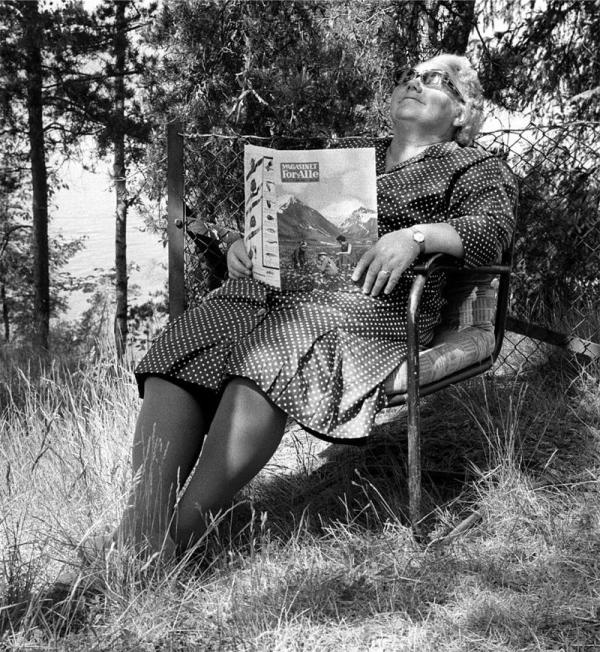
Hagemann is in charge of the interdisciplinary research project “Husarbeid som ideologi og praksis” (Housework as ideology and practice) at the Department of Archaeology, Conservation and Historical Studies at the University of Oslo. The research project on the history of housework took shape in 2002. The researchers connected with the project have recently published an anthology of articles based on their projects, Twentieth-century housewives: Meanings and implications of unpaid work.
The study of the history of housework takes in a number of upheavals in politics and society, where the relationship between the sexes, between the public and the private, and between individuals and families are central themes. Hagemann has noticed that the media have become very interested in the project. And the theme of housework has also arisen in other contexts, as in debates about who does most of the housework when both husband and wife work full-time.
– Although we can no longer talk about a housewife politics, the topic is equally relevant today, says Hagemann.
– Production in the form of unpaid housework has been and still is a central part of our welfare state and our society.
Feminist optimism in the post-war period
The housewife, as a married woman working at home, responsible for childcare, cleaning and shopping, had her heyday in the 1950s. This period is accurately described as the golden age of the housewife. In her research Hagemann has focused particularly on the political discourse concerning housewives and housework in the post-war era, known in Norway as housewife politics. In the article, “Housewife and citizen? Gender politics in the post-war era”, she writes that welfare policy in the 1950s contributed to a conservative direction in gender politics. A feminist optimism and desire for equality asserted itself in the war years and towards the end of the 1940s.
Furthermore, at the international level there was a will to improve women’s rights: The work to develop the UN’s convention on women’s rights was begun soon after the war, and in 1944 the ILO (The International Labour Organisation) decided that women and men would be given equal status in the redistribution of work when soldiers returned to their peacetime jobs.
The traditional view of women in social democratic society
But this radical gender boom was soon replaced by a more conservative housewife politics that would see to it that most women were able to work at home. The demand for women’s rights was silenced in the face of the challenges the West faced in readjusting from wartime production to peace.
– The housewife politics did not imply of itself a drive to get women to return to the kitchen sink. It was an attempt to resolve one of history’s greatest dilemmas: After the war there was an enormous baby boom and great obstacles to overcome in the form of a shortage of housing and housing that was no longer viable. Many families had neither running water nor electricity, and someone had to do the housework. Housewife politics was both a recognition of this work and an important part of social democracy’s modernisation project, says Hagemann.
In her opinion the role of housewife must be understood in light of the dilemmas of important individual rights, in terms of personal income and freedom, and the need for labour within the family. The political initiatives were first and foremost directed towards reproduction and would support women who had to concentrate on their family and housework. In Norway there was a greater focus on a one-sided housewife politics than was the case in the other Nordic countries.
Post-war Sweden, in contrast, prepared more for a combined working life and housework role for women. Hagemann points out that conservative Christian values were stronger in Norway than they were, for example, in Sweden, and that the Norwegian welfare model had traditionally prioritised class and family considerations ahead of women’s rights. The demand for labour was great. Nevertheless, the Norwegian Labour Party supported the conservative housewife policies until well into the 1960s.

– The Norwegian welfare state is based on a model where the man is the provider and the woman is provided for. However, we need to look at both sides of this. The housewife politics contributed to enormous social improvements for the majority of women. Where housewives had previously had a very difficult daily existence with both paid work and heavy housework, from morning until night, the housewife politics was organised to make daily life simpler for married women. It was founded on the goal of well-being for as many people as possible in the post-war years, emphasizes Hagemann.
The domestic sphere’s importance in politics
Throughout the whole of the twentieth century important changes took place for women: They won the vote, they could take higher education and gain work, and the birth rate decreased. – During this whole period, but perhaps especially since the inter-war period, we can see the contours of the housewife policy. It was noticed that housework factored in people’s health, and that it had to be based on knowledge. Within the labour movement a woman’s right to work was reduced as a measure against unemployment. However, one of the characteristics of an aggressive housewife policy after the war was the defence of higher levels of pay for men – in a situation when equal pay was on the political agenda the two income family would be a threat to men’s wages, says Gro Hagemann.
Is it perhaps the case that women had to pay the price for modernisation in the form of traditional gender roles? – Since the 19th century, individualisation and democratic rights have to a certain extent also included women. Nevertheless, it has always been difficult to place housewives within such modern terminology. Their welfare and their path to full democratic rights must be seen in light of them being part of the family. There is no direct relationship between modernisation and the lack of rights for women. Both equality and housewife politics are products of modernity, just as both working life and the family have, in a sense, maintained and carried on the traditional life of a woman and women’s tasks.
Ideologizing the housewife
The image many have of the typical housewife comes from the post-war period; the efficient, cultivated and healthy woman who efficiently keeps house and home in order, and who ensures the happiness of her family. With an increase in prosperity, purchasing power, household appliances and a wealth of consumer goods the housewife experienced a lightening of her load. The housewife was no longer just a domestic producer. She became an important actor in the market too.
– Precisely the housewife’s role as the most important consumer was used as position for political negotiation. Through organised consumer campaigns housewives attempted to influence the manufacturers to a certain degree. After the war there was a big concentration on the household appliance industry in Norway – not just because it was profitable but also to improve people’s daily lives. However, the powerful ideologisation of the housewife – as experienced in 1950s USA – did not occur to the same extent in Scandinavia. In the USA it was almost un-American for women to have their own career, explains Hagemann.
– Neither must we forget the class aspect of this situation: The American housewife ideology was a middle class project that turned the suburban housewife into a symbol of a happy and good life. In Norway housewife politics was aimed at working class women.
Here in Norway feminists and those interested in women’s issues had different views on the role of housewife in the 1970s. On the one hand they wanted to completely do away with the role of housewife – but on the other, they demanded that the status of the housewife and her work be raised.
– Myself, I belong to the generation that contributed to the perception of the housewife’s life as negative. We looked upon the role of housewife as a meaningless and futile plight. However, there were feminists too who were interested in gaining recognition for a housewife’s work, among them Tove Stang Dahl, who worked to secure housewives’ social rights. This area of women’s rights is in many ways a direct extension of the Norwegian Labour Party’s housewife politics from the post-war era, explains Hagemann.
Housework as an area of expertise
According to Hagemann housework as area of expertise was institutionalised in a variety of ways from the middle of the nineteenth century until around 1970. The first colleges for housewives appeared in the 1860s, Statens lærerinneskole i husstell (the national college for domestic science teachers) at Stabekk in 1909, national assessments and public information campaigns were started in the 1930s, and were expanded after the war. Radio carried its own program devoted to housework, and domestic science was first taught on a small scale in schools in the 1890s and was made compulsory in the Norwegian Labour Party’s public school legislation at the end of the 1930s.
– There was broad consensus that housework should be part of a general education, in the form of domestic science, for example. Furthermore, the “old” housewife organisations, including Hjemmenes Vel (“Home’s well-being”) and Husmorforbundet (the Association of Housewives), took the view that these skills should also be the foundation of a vocational education and lead to a professionalisation of the career of housewife, explains Hagemann.
– However, after 1970 the opposite happened. The schools, the subjects, the institutions and the organisations have changed both their names and their subject matter. Even the teacher training college at Stabekk is no longer a “domestic science school”, and the Association of Housewives has become “the Norwegian Association of women and family”.
One contemporary trend is that housework is increasingly becoming more visible and rewarding:
– Housework is becoming a commodity. There are now many cleaning companies, and companies that offer childminding or help with shopping and planning are springing up. – One solution is the import of cheap labour hired on short-term contracts – something that is in poor keeping with the democratic ideals of the welfare state. On the other hand optimism about state solutions has faded considerably since the 1970s. It is neither economically possible nor socially desirable to abolish all unpaid work. Nevertheless, we continue to need public well-being, and also a tax and income politics that makes it attractive to bring children into the world. This challenge is still of considerable interest. And within the EU there is now a renewed interest in the Nordic model, which combines market economics and state welfare, concludes Gro Hagemann.
Translated by Matthew Whiting KILDEN
The goal of the research project "Husarbeid som ideologi og praksis" (Housework as ideology and practice) (2002-2007)is to analyze how the ideology and practice of modern housework changed throughout the twentieth century. Gro Hagemann, who is a history professor, leads the project. The project is being financed by the Norwegian Research Council. Gro Hagemann's part of the project deals with the politics of the housewife in Scandinavia 1920-1980.
Betty Friedan (1921-2006) published in 1963 the book The Feminine Mystique. The book was based on interviews with well-educated housewives. Friedan struck a blow against the myth of the cultivated housewife who kept her house in perfect order for her husband and children. She wrote, "A woman today who has no goal, no purpose, no ambition patterning her days into the future, making her stretch and grow beyond that small score of years in which her body can fill its biological function is committing a kind of suicide." The book became a bestseller and greatly influenced the women's movement of the 1960s.